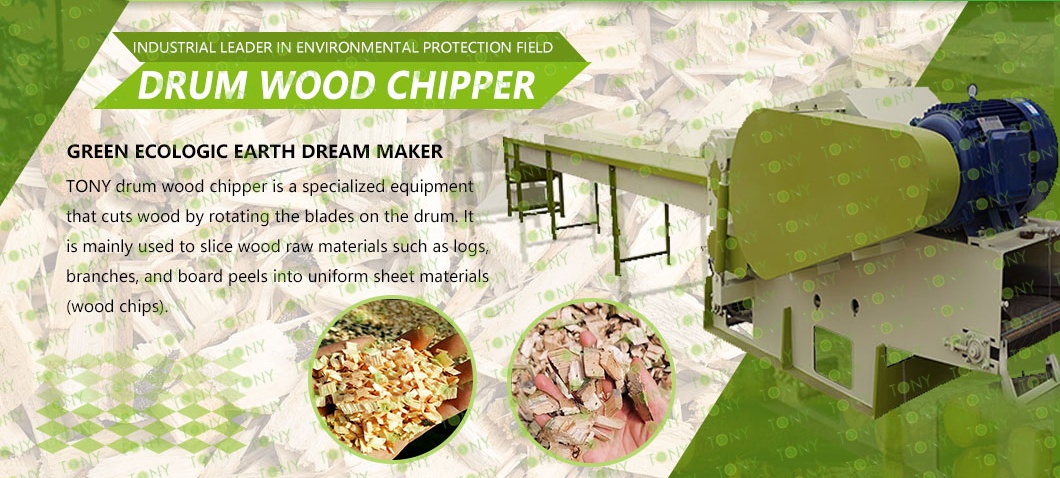In the wood pellet (or biomass pellet) processing industry, wood chippers are the "front-end key equipment" for raw material pretreatment. Especially for enterprises that use logs, branches, and large pieces of waste wood as raw materials, they provide "standardized raw materials" for subsequent crushing, drying and granulation links by cutting the raw materials into uniform wood chips (usually 3-8mm thick), which directly affects production efficiency and cost control, and is one of the core configurations to achieve "cost saving".
"Cost reduction" logic of wood chipper: cost compression from raw materials to process
1. Adapt to low-priced raw materials, broaden the feed range, and reduce procurement costs
The raw materials for particle processing account for 60%-70% of the total cost, while low-priced raw materials (such as logs, branches, trunks, large scraps of furniture factory, construction waste wood, etc.) are often large in size and difficult to transport and handle, and the purchase price is much lower than "pretreated raw materials" such as sawdust and broken wood.
Wood chippers can directly cut these large pieces of raw materials without additional "raw material pretreatment fees", and can use local low-priced biomass resources (such as forestry harvesting residues and orchard pruning branches) to reduce long-distance transportation costs.

2. Reduce energy consumption and reduce unit processing costs
The cut wood chips have uniform specifications (controllable thickness and length), and after entering the crusher, the energy consumption of "repeated crushing" can be reduced (the crushing power consumption is reduced by 10%-15%);
The gap between the wood chips is large and breathable, and the heat is more uniform in the tumble dryer, the drying time is shortened by 15%-20%, and the fuel consumption of the hot air furnace is reduced (the drying cost per ton of raw materials is reduced by 8-15 yuan);
Avoid equipment downtime losses due to confusing raw material specifications (such as “cracking machines” caused by uncut large pieces of wood) (a single shutdown may lose hundreds to thousands of yuan in production capacity).
3. Reduce labor and infrastructure costs
Automatic feed design (such as conveyor belt + feed port adjustment device), 1-2 people can operate, without manual handling or breaking of large pieces of raw materials;
There is no need to build a large pretreatment workshop for raw materials stacking. Wood chips can be stored directly in an open-air site (just to prevent rain), saving investment in factory infrastructure
Wood chippers directly compress costs for pellet processing enterprises by "expanding the core role of low-priced raw materials channels."





















